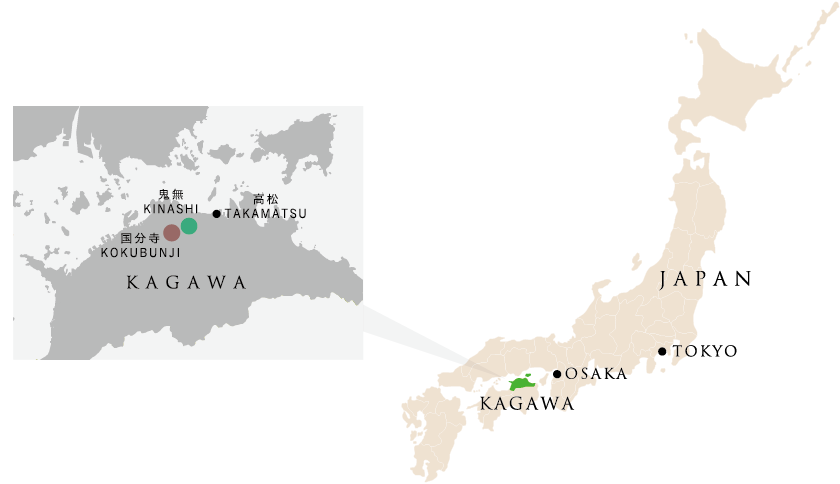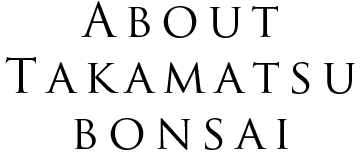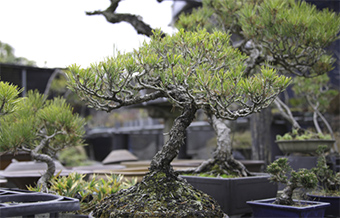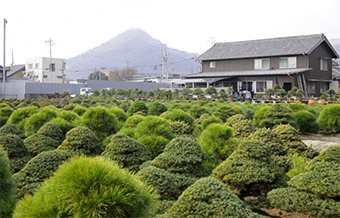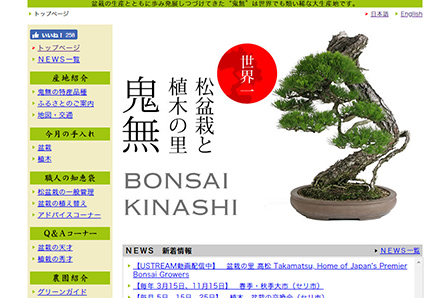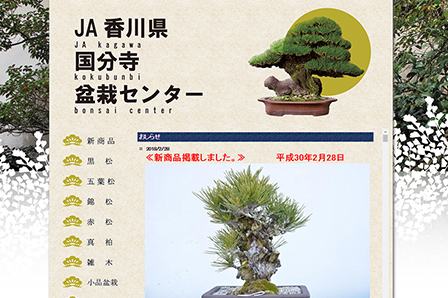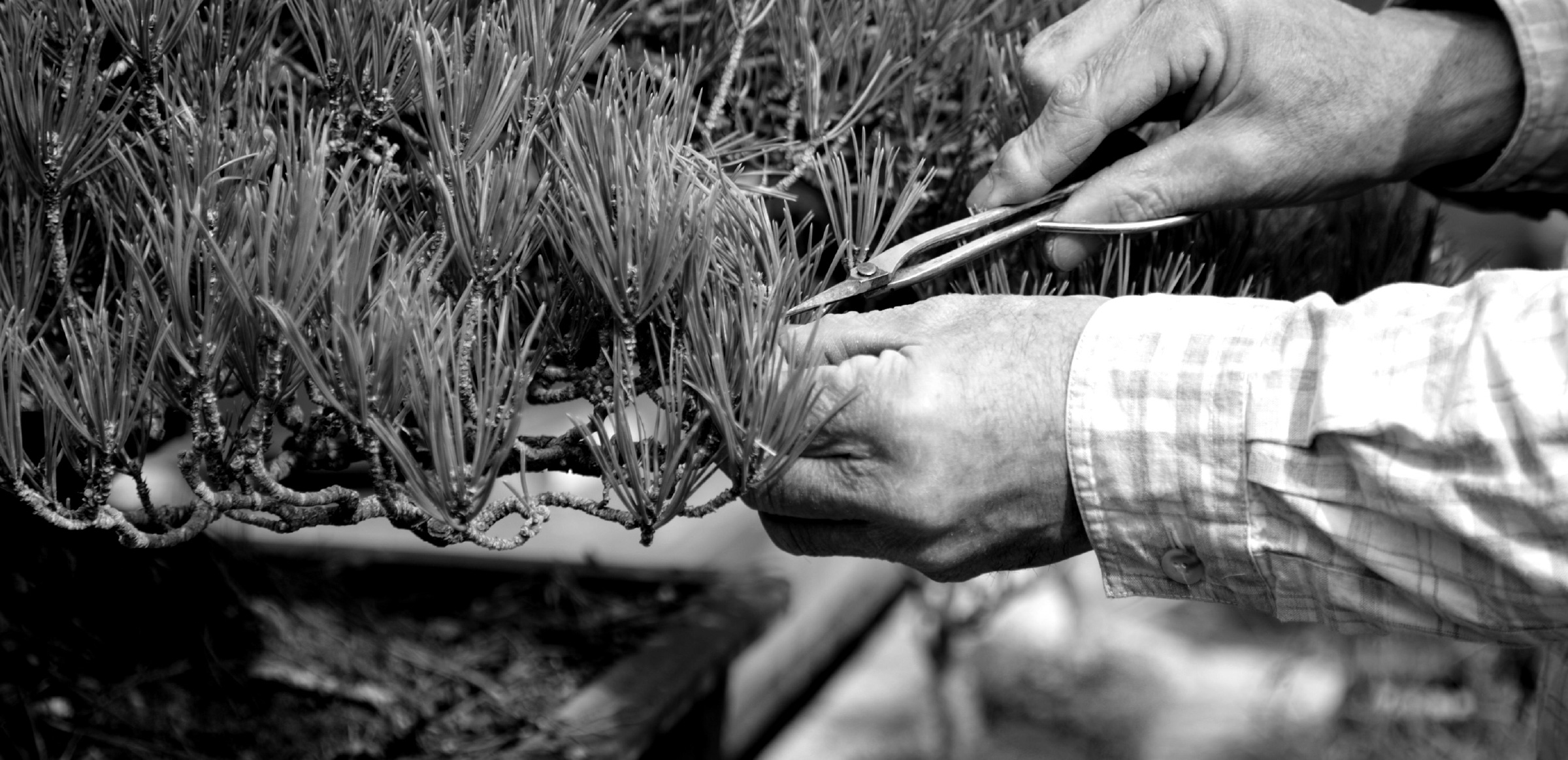
The history of Takamatsu bonsai dates back approximately 200 years to the Bunka era (1804-1818) during the Edo Period (1603-1868). It was said to have begun with people transplanting trees that were naturally growing nearby into pots and selling them. Takamatsu is temperate, with little rain, and the temperature difference between summer and winter relatively small. These factors, combined with well-drained soil, make Takamatsu perfectly suited to growing pine trees. Grafting and pruning techniques derived from the cultivation of fruit trees were incorporated, and Takamatsu grew into Japan’s top bonsai production area. Pine trees grown in well-drained soil are rot-resistant and not prone to damage. Today, Takamatsu bonsai is globally renowned, and buyers visit from Europe and other parts of Asia.
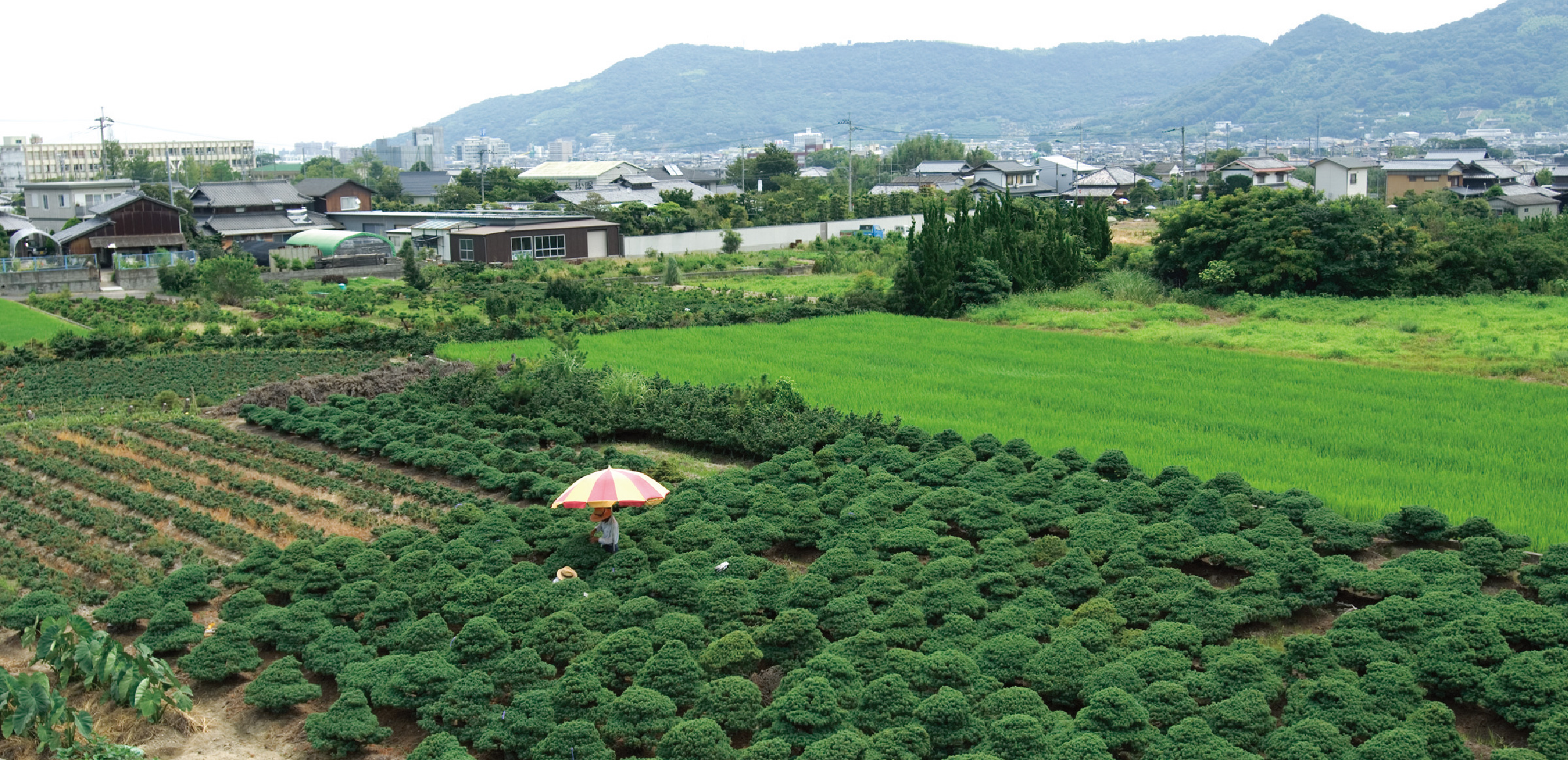
The Kinashi and Kokubunji districts of Takamatsu are Japan’s top producers of pine tree bonsai. With expansive nurseries full of fascinatingly shaped pines, these districts boast an approximately 80% share of the domestic market. There are around 60 bonsai producers in Kinashi and Kokubunji whose products are known as ‘Takamatsu bonsai.’ Bonsai gardens usually purchase pines that have grown to a certain size and trim them to make bonsai. However, in Takamatsu—because the pines are originally grown here—the living art of bonsai begins at the seedling stage. It seems that because human hands guide them from their earliest stages of life, the Takamatsu bonsai trees become both beautiful and singularly friendly in appearance.
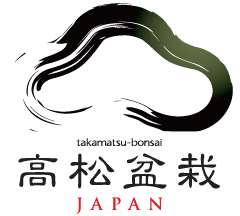
The pine tree form is a symbol embodying Takamatsu bonsai, which boasts an 80% share of Japanese pine tree bonsai. The powerful stroke of the logo represents the vitality of bonsai.
